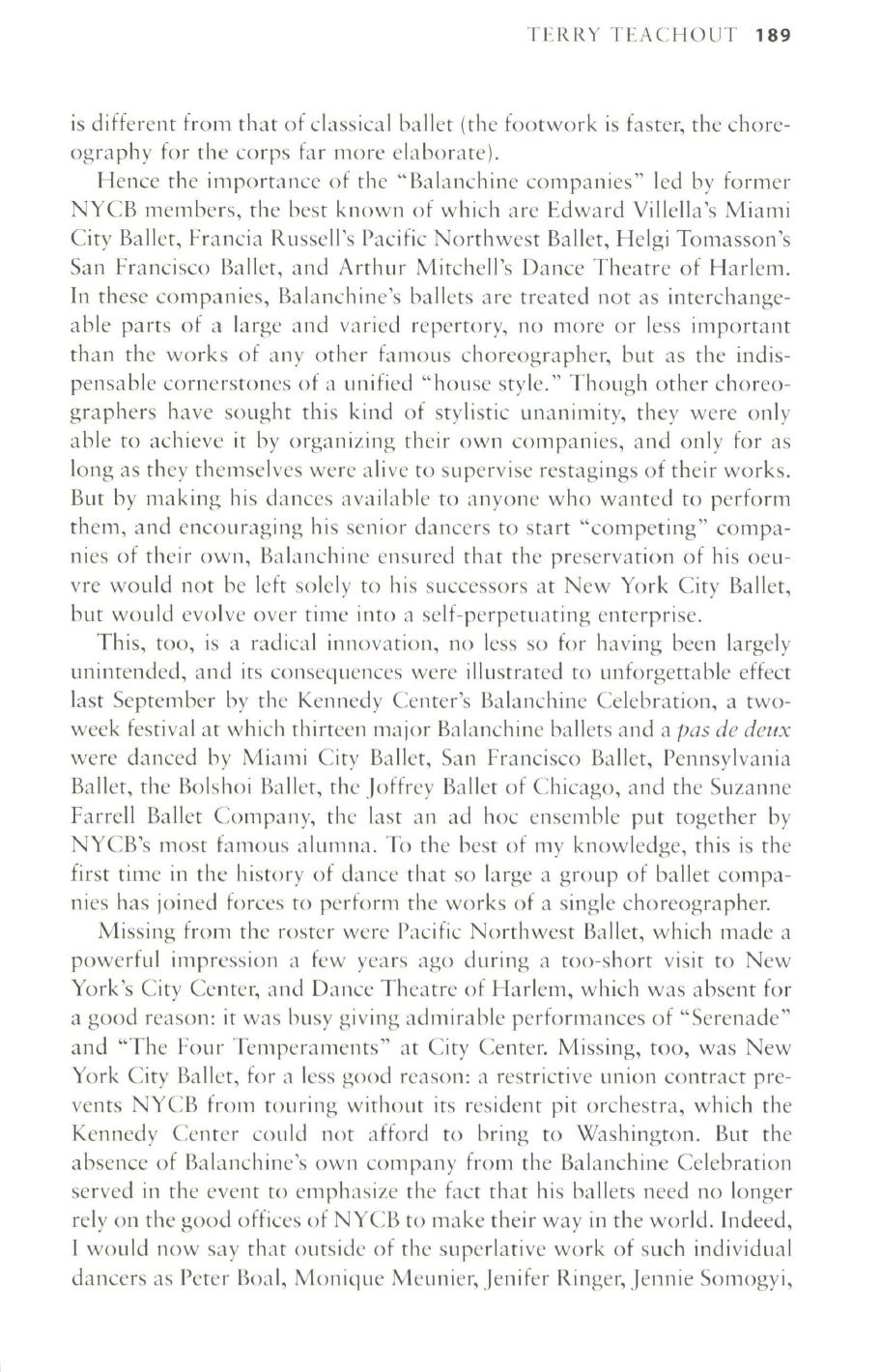
TERRY TEACHOUT
189
is different from that of classical ballet (the footwork is faster, the chore–
ography for the corps far more elahorate).
Hence the importance of the "Balanchine companies" led by former
NYCB members, the best known of which are Edward Villella's Miami
City Ballet, Francia Russell's Pacific Northwest Ballet, Helgi Tomasson's
San Francisco Ballet, and Arthur Mitchell's Dance Theatre of Harlem.
In
these compa n ies, Ba la nch ine 's ba Ilets are trea ted not as interchange–
able parts of a large and varied repertory, no more or less important
than the works of any other famous choreographer, but as the indis–
pensa ble cornerstones of a uni fied "house sty
Ie."
Though other choreo–
graphers have sought this kind of stylistic unanimity, they were only
able to achieve it by organizing their own companies, and only for as
long as they themselves were alive to supervise restagings of their works.
But by making his dances available to anyone who wanted to perform
them, and encouraging his senior dancers
to
start "competing" compa–
nies of their own, Balanchine ensured that the preservation of his oeu–
vre would not be left solely
to
his successors at New York City Ballet,
bur would evolve over time into a self-perpetuating enterprise.
This, too, is a radical innovation, no less so for having been largely
unintended, and its consequences were illustrated
to
unforgettable effect
last September by the Kennedy Center's Balanchine Celebration, a two–
week festival at which thirteen major Balanchine ballets and a
pas de deux
were danced by Miami City Ballet, San Francisco Ballet, Pennsylvania
Ballet, the Bolshoi Ballet, the Joffrey Ballet of Chicago, and the Suzanne
Farrell Ballet Company, the last an ad hoc ensemb le put together by
NYCB's most famous alumna. To the best of my knowledge, this is the
first time in the history of dance that so large a group of ballet compa–
nies has joined forces to perform the works of a single choreographer.
Missing from the roster were Pacific Northwest Ba ll et, which made a
powerful impression a few years ago during a too-short visit to New
York's City Center, and Dance Theatre of Harlem, which was absent for
a good reason: it was busy giving admirable performances of "Serenade"
and "The Four Temperaments" at City Center. Missing, too, was New
York City Ballet, for a less good reason: a restrictive union contract pre–
vents NYCB from touring without its resident pit orchestra, which the
Kennedy Center could not afford to bring
to
Washington. But the
absence of Balanchine's own company from the Balanchine Celebration
served in the event to emphasize the fact that his ballets need no longer
rely on the good offices of NYCB to make their way in the world. Indeed,
I
would now say that outside of the superlative work of such individual
dancers as Peter Boal, Monique Meunier, Jenifer Ringer, Jennie Somogyi,


